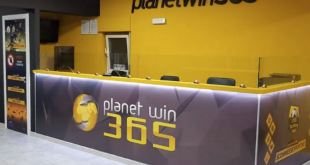 Ben Steenhuisen, Senior Software Architect at Bayes Esports, breaks down some of the key differences between esports and traditional sports, highlighting where lessons can be learned and how to cater to new player bases.
Ben Steenhuisen, Senior Software Architect at Bayes Esports, breaks down some of the key differences between esports and traditional sports, highlighting where lessons can be learned and how to cater to new player bases.
The competitive landscape in esports has developed in a very unique way compared to traditional sports. This isn’t a surprise – esports has exploded in just decades whilst some traditional sports have been incrementally growing for over a century, becoming embedded within the culture of many societies. Let’s investigate some of the structural differences between the two, and explore some of the ways that esports can learn and improve in this regard.
From the bottom
Traditional sports have always been bounded by geographic limitations. People learn and play sports with their family and friends at schools or clubs. From there, the best players bubble up to play in regional competitions, and the best of those might compete at a national level. These provide well-defined tiers of a sports development skills pyramid, and the path to the top is clear. In some sports there are also club-centric competitions which either run in parallel to – for example the English Premier League (for football) or the Indian Premier League (for T20 cricket); or overshadow any national level (for example, basketball, baseball, American football).
Although the early parts of esports history were also exclusively in-person events (from Spacewars to arcade machines – even if they did travel from city to city as part of an Electronic Circus!) esports as we know it today took an entirely different course with the widespread accessibility of high-speed internet connectivity. This allowed players to play from the comfort of their own home, competing against a much broader set of players than they could ever have done in-person. It allowed more diverse teams – not separated by geopolitical borders, which has given access to more diverse playstyles and strategies.
However, the rapid growth of esports and its digital nature have caused the aforementioned natural development pyramid present in other sports to be almost completely absent in esports. Fans might enjoy playing the game casually, but where to go from there to try and improve and break-through to the professional level can be quite unclear (more on that in a bit).
To the top
Let’s take a moment to look at the other end of the esport skills pyramid: the top. The underlying desire for esports has always been the competition, a yearning to be the best. This has been the driving force for esports since the start and in some ways has created the best modern marketing for esports as a whole: stadiums packed to the brim with ecstatic esports fans as the best players and teams duke it out. That’s the pinnacle of esports, and it’s almost hypnotic how alluring it is to both hardened fans and newcomers alike.
Even for those who know they’ll never reach that level of skill in the game, these major events provide the social setting for many like-minded individuals to congregate. In Dota 2 it’s been said that The International isn’t just a yearly competition, it’s also a festival celebrating the game and the scene.
The same holds true for major events in other esports titles, such as Majors in CS:GO or Worlds in LoL. Despite the online nature of esports for many of its competitions, large-scale in person events will probably remain the lifeblood of top-tier esports for the foreseeable future.
The missing middle
Now that we’ve briefly touched on both ends of the skill spectrum (both the base and the apex) let’s see what’s been missed along the way. The evolutionary path that esports has taken has come at a cost: some components are missing from the esports landscape, most notably any semblance of school support. Whilst sports like cricket, football, or rugby might have dedicated timeslots in a child’s extra-mural timetable, practice fields or venues, and on-hand coaching staff provided by schools; esports has none of those benefits.
This leaves newer players to fend for themselves. Not only must they discover esports that they enjoy, they need to learn to play, and then improve when they get stuck. This can be challenging for young people, but equally daunting for older players who are looking to get into a game where the average pro player is just 23.
Filling the gap
The community has looked to fill some of these gaps: esports coach marketplaces, tutorials, guides, statistics, matchmaking, analytics tools … the list goes on. Many esports developers do some amount of work to implement simple MVP versions of features – but there’s often not enough financial incentive to truly make a fully fledged solution.
This means game developers generally leave it in a suboptimal state, and this is where 3rd parties often swoop in to bridge the gap. It’s risky for 3rd parties however – only a fraction of the playerbase for the game will ever be potential users/customers, and the game developers could see a positive customer response and be tempted to improve their offering in order to cut 3rd parties out.
One of the best examples of a 3rd party platform is Faceit. It’s a multi-title matchmaking platform which allows tournaments, leagues and private events to be hosted on it. It handles as much administrative work as can possibly be automated – from registration, to hosting the servers, to managing the results. Part of its success was spreading out to support multiple titles, not leaving too many eggs in a single esports developer’s basket.
The events hosted on Faceit indicate the skill levels expected, some are more targeted than others, depending on the host. This has allowed competitive tournaments to take place at just about every skill level, enticing the target audience and maximising engagement and enjoyment of fans through playing with similarly skilled people.
Something which has been rising in popularity more recently have been esports clubs – primarily city-wide, or at a university/college level. Some are specific to a single title, whilst others are open to multiple different titles. They generally aim to provide a social environment where people can play and learn with like-minded individuals, and many host local events – balancing out competition and fun. These clubs provide a platform for friendships to form, and also underlying support structures for players to learn and grow together.
Ultimately it’s a lot of work filling in all the gaps that got “missed” when esports went online. Providing more support and rungs on the ladder make it easier for people to improve, enjoy, and get supported as they delve further into esports – but also revisiting the social aspect of gaming.
Overall the grassroots esports scene has been somewhat underdeveloped as esports has grown so rapidly, but it’s great to see that we’re reaching the point where communities and the free market are looping back to make sure every facet of esports is considered. Whilst the top tier of esports competition might remain a dream for many, that’s good enough to motivate and captivate the audiences of tomorrow.
Disclosure: Faceit is part of the ESL Faceit Group, which are partners of Bayes Esports GmbH.









